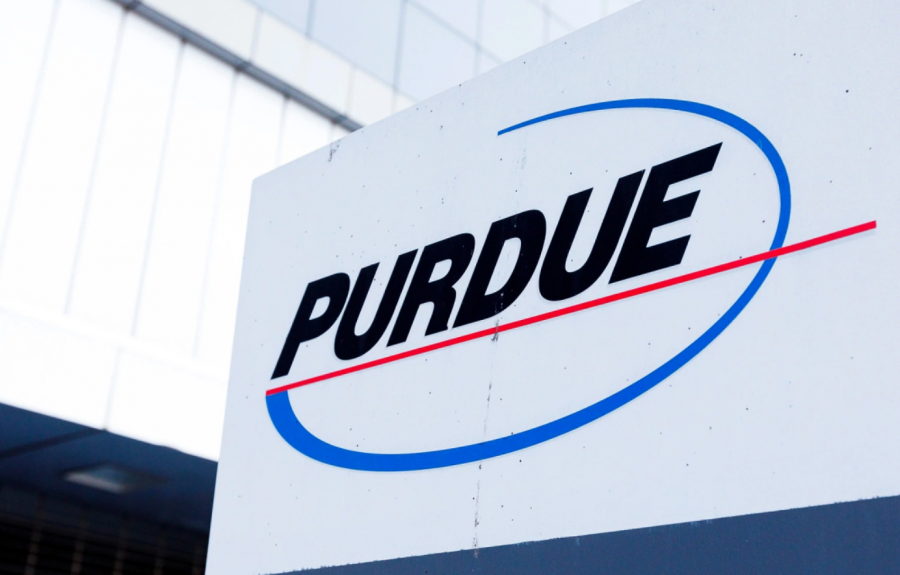Purdue Pharma and The Opioid Addiction Epidemic
Purdue Pharma
The COVID-19 crisis is at the forefront of everyone’s mind right now, but it is not the only epidemic ravaging America. The opioid crisis has caused devastation in the U.S. for more than 20 years, costing over half a million lives and over $631 billion, with no end in sight until recently. Purdue Pharma, the maker of OxyContin, an opioid prescription drug, is one of the biggest drug manufacturers in the U.S. OxyContin is a drug that is prescribed for chronic pain syndromes, treatment of moderate or severe pain, and terminal cancer, but the National Center for Biotechnology Information (NCBI) said, “The substantial attention that OxyContin has received is not for its medical effects, but for its addiction liability and abuse potential.” On October 21, the company pled guilty to felony criminal charges for contributing to the opioid crisis, including paying doctors to overprescribe medication.
Under the settlement with the U.S. government, which resolved criminal charges and civil liability, Purdue Pharma faces $8 billion in penalties, which will fund opioid treatment and abatement programs, and the company will be dissolved. A new company, run by the government to serve the public interest, will be created out of Purdue Pharma’s assets and will manufacture drugs similar to OxyContin, as well as overdose––and addiction––treatment drugs. Other pharmaceutical companies have been fighting criminal charges for years and have entirely denied responsibility for the opioid crisis, so this settlement against Purdue Pharma is a milestone in the government’s efforts to hold drugmakers accountable for the opioid crisis, as part of its crusade to end the epidemic.
According to the U.S. Drug Enforcement Administration (DEA), OxyContin has played a role in 464 overdose-related deaths in two years. According to the staggering statistics provided by the Centers for Disease Control, every day 128 people die from an opioid overdose. That adds up to more than 46,000 deaths per year, and this epidemic has been going on for more than two decades. Many patients are introduced to opioids at hospitals after undergoing surgery, and then restock by going to pain clinics, where people can pick up prescribed opioids to treat pain. But many of these clinics have been charged with either prescribing opioids without actually consulting the patient, or prescribing hundreds of opioids to single patients with no questions asked.
For example, Barry Schultz, a former physician who operated a pain clinic in Florida, has been sentenced to 157 years in prison for operating a “pill mill” and prescribing massive amounts of opioids to patients who came to his clinic with pain complaints. The prosecutor of his case, Dave Aronberg, called him a “notorious drug dealer,” whereas Schultz referred to himself as a “healer.” These diverging views highlight the debate over who is at fault for causing the opioid crisis. Many physicians claim that they thought they were simply prescribing medication that a patient needed and that they were not aware of the dangerous side effects because the manufacturer failed to disclose the risks. So are the doctors who prescribe the medication to blame, or the manufacturers who supply the doctors with the opioids? Purdue Pharma’s $8 billion settlement, the biggest ever against Big Pharma, is one of the first cases that holds manufacturers accountable for the opioid crisis, showing that both the manufacturers and the doctors are at fault.
Though most people are aware that opioids are dangerous, much of that fear is based on the stigma surrounding opioids, not an understanding of the actual science of what they do to the body. Upper School science teacher Faye Wells said, “Opioids work in the pain pathway by dampening the signaling of pain in the spine to the brain. In addition, there is a significant effect on the reward circuit of the midbrain––allowing for a ‘high’ or a euphoric effect.” This “high” effect is what prompts people to use opioids for non-medical purposes, and what eventually leads to addiction. But what makes opioid addiction so dangerous is the opioids’ effect on the brainstem. When asked why addiction to opioids is life-threatening, Ms. Wells said, “The brainstem is responsible for many of the functions that are automatic, like breathing. So the main reason overdoses are occurring is because people are doing too much and they stop breathing.”
Despite the risks of opioid and drug use, substance abuse affects people of all ages, including teenagers. Though the use of opioids (which include both prescription drugs as well as illegal drugs like heroin or Fentanyl) and other hard drugs among high school students decreased in the past few years, replaced by a surge in vaping and marijuana use, there is still a presence of opioids in high schools across the country. To combat the drug problem in teenagers, many schools incorporate preventive substance abuse education into their curriculum and invite speakers to come and warn students about the dangers of drug use. Regarding Latin specifically, sophomore Cameron Woan said, “Latin has provided us with speakers who have suffered from drug abuse and how it has impacted their lives, which has served as a powerful reminder to the student body about the negative effects of drug abuse.”
Despite these efforts, schools can do only so much to address the problem, and, as sophomore Alice Mihas pointed out, “It would be extremely hard for schools to have an effective education about opioids and drugs to prevent students from using them, because drugs are such a prevalent part of teen culture.”
The opioid crisis won’t go away overnight; drugs have integrated themselves too deeply into modern culture. But bringing the individuals and manufacturers that have contributed to the opioid epidemic to justice is a step in the right direction. While Purdue Pharma profited from the users’ addiction––reportedly earning more than $35 billion from the sales of OxyContin––they’ll now use their profits to benefit the users’ health and aid in their rehabilitation. And, hopefully, these criminal prosecutions and penalties against drug companies will help bring an end to the opioid epidemic in the U.S.
Sources:
Purdue Pharma offers $10-12 billion to settle opioid claims – NBC News
The political consequences of opioid overdoses – The National Center for Biotechnology Information
Understanding The Epidemic – U.S. Centers for Disease Control and Prevention
10 Biggest Pharmaceutical Settlements in History – Enjuris.com
Report: Opioid crisis cost U.S. economy $631B from 2015-2018 – American Hospital Association
The Drug Overdose Epidemic: Behind the Numbers – U.S. Centers for Disease Control and Prevention
The Promotion and Marketing of OxyContin: Commercial Triumph, Public Health Tragedy – The National Center for Biotechnology Information
Purdue Pharma Agrees To Plead Guilty To Opioid Criminal Charges – Addiction Center

McLaine Leik (‘23) is thrilled to serve as The Forum’s Managing and Standards Editor this year! She has been writing for The Forum since her freshman...




















































